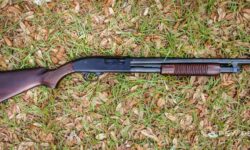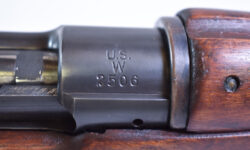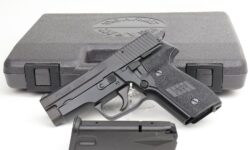HOW TO MAKE AN AR-15 BINARY TRIGGER: A DIY GUIDE
Do you want to make your own ar15 binary trigger? It is actually a lot easier than you might think! In this guide, we will walk you through the steps necessary to create your own ar15 binary trigger. We will also discuss the benefits of doing so. So, let’s get started!
Ar15 binary trigger DIY
- The first step is to gather the necessary materials. For this project, you will need a lower receiver, an upper receiver, a set of pins, a trigger assembly, and a binary trigger. You can find all of these items at your local gun store or online.
- Next, you will need to assemble the lower receiver. This is actually the easiest part of the process. Simply follow the instructions that come with your kit. Once you have assembled the lower receiver, it is time to move on to the next step.
- Now comes the slightly more difficult part: assembling the upper receiver. Again, simply follow the instructions that come with your kit. Once you have assembled the upper receiver, it is time to install the binary trigger.
- To do this, first insert the set of pins into the lower receiver. Then, take the binary trigger and insert it into the upper receiver. Make sure that the trigger is properly seated in the receiver before moving on to the next step.
- Finally, you will need to install the trigger assembly. This is actually very simple to do. Simply follow the instructions that come with your kit. Once you have installed the trigger assembly, your ar15 binary trigger is complete!
There are a few things to keep in mind when using your ar15 binary trigger. First, always make sure that your safety is on when not firing. Second, always keep your finger off of the trigger until you are ready to shoot. Third, always make sure that the barrel is clear of obstructions before firing.
By following these simple rules, you can ensure that your ar15 binary trigger will function properly and safely. So, what are you waiting for? Get out there and start building your own ar15 binary trigger today!
What makes a trigger binary?
In order to understand what a binary trigger is, we first need to understand how a traditional AR-15 trigger works. The AR-15 is a semi-automatic rifle that uses what’s called a direct impingement gas system. In this type of system, the gases from the fired round are used to push the bolt carrier group back, which in turn cycles the next round into the chamber.
The problem with this system is that it can be unreliable, especially when using lower quality ammunition or if the rifle isn’t properly cleaned and maintained. This is where binary triggers come in.
Binary triggers work by using two separate triggers: one for the initial shot and one for the second shot. The initial trigger pull still uses the direct impingement gas system, but the second trigger pull is activated by the movement of the bolt carrier group. This means that the second shot can be fired much faster and more reliably than with a traditional AR-15 trigger.
There are a few different companies that make binary triggers for the AR-15, but they can be quite expensive. Luckily, it’s relatively easy to make your own binary trigger with a few simple tools and parts.
Do I need a full auto bolt carrier for binary trigger?
The quick answer is no. You can use a standard semi-auto bolt carrier. The difference comes in when using a full auto trigger group. A full auto trigger group will function with a standard semi-auto bolt carrier, but it will not be as reliable as it would be with a full auto bolt carrier.
There are two main types of AR-15 binary triggers on the market, those that work with a full auto sear and those that do not require one. If you have an existing full auto AR-15, then you can use either type of trigger. If you are starting from scratch, then you will need to purchase a complete lower parts kit that includes a full auto sear.
What is the benefit of a Binary AR-15 trigger?
Binary triggers offer a number of advantages over traditional semi-auto only triggers. The most notable advantage is the increased rate of fire. With a binary trigger, you can essentially double your rate of fire. This can be a huge advantage in close quarters combat situations or when engaging multiple targets.
Another benefit of binary triggers is that they can help you conserve ammo. This is because you have more control over the discharge of each round. With a traditional semi-auto trigger, you have to hold the trigger down for the entire duration of the firing cycle. This often results in wasted rounds as you continue to hold the trigger down even after your target has been neutralized.
With a binary trigger, you can fire a round with each pull of the trigger, and then release the trigger to reset it. This allows you to fire only as many rounds as you need, which can help conserve ammo in situations where every shot counts.
Finally, binary triggers can simply be fun to shoot. There’s something inherently satisfying about being able to rapidly fire off rounds with a single pull of the trigger. If you’re looking for a way to add some excitement to your range time, a binary trigger is definitely worth considering.
Are there any downsides to using a Binary AR-15 trigger?
The biggest downside to using a binary trigger is the increased cost. Binary triggers generally cost twice as much as traditional semi-auto only triggers. Additionally, binary triggers are not as widely available as traditional semi-auto only triggers. This means that you may have a more difficult time finding the specific model or brand that you’re looking for.
Another potential downside to using a binary trigger is the increased risk of accidental discharge. This is because the trigger requires less pressure to pull than a traditional semi-auto only trigger. As such, there is always the potential for an accident if you’re not careful.
Finally, some shooters simply don’t like the feel of a binary trigger. The lightened trigger pull can take some getting used to and may not be suitable for everyone.


